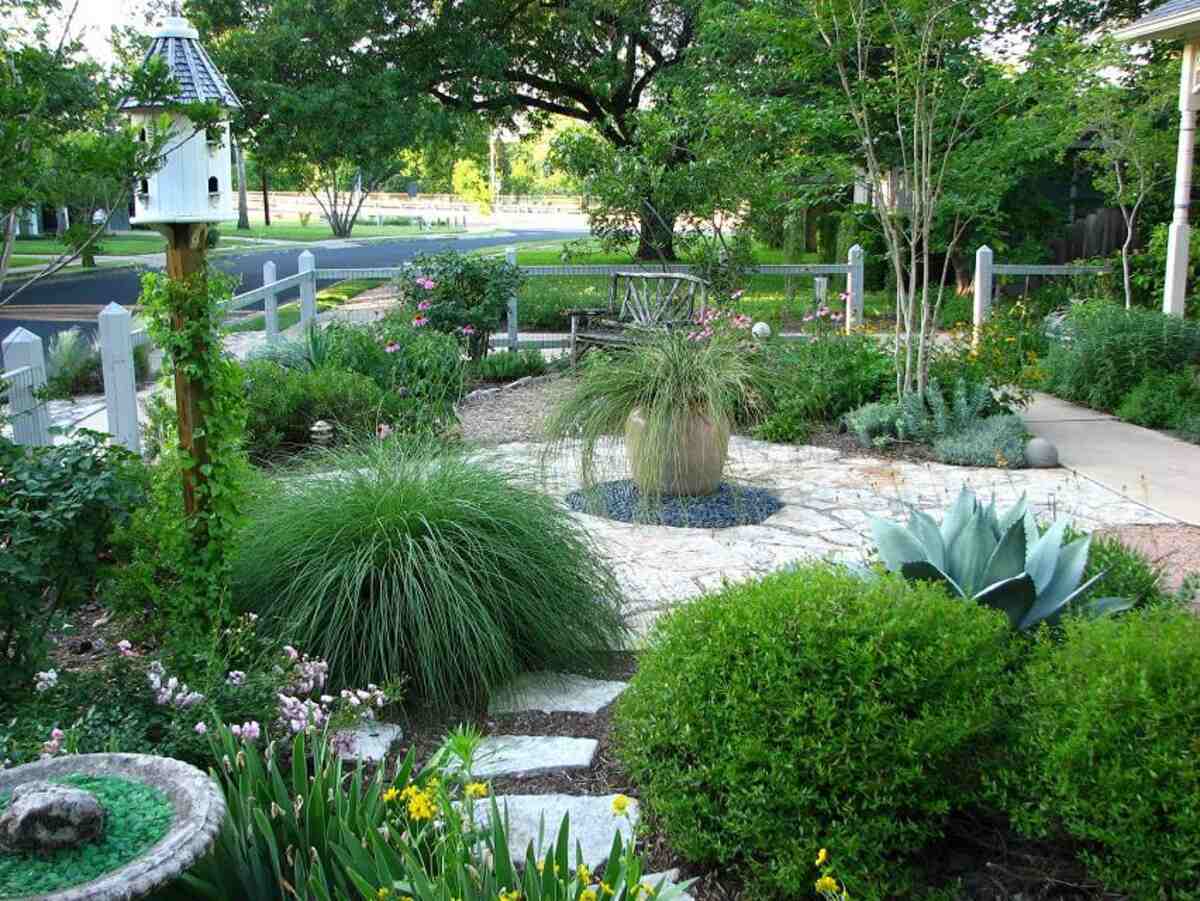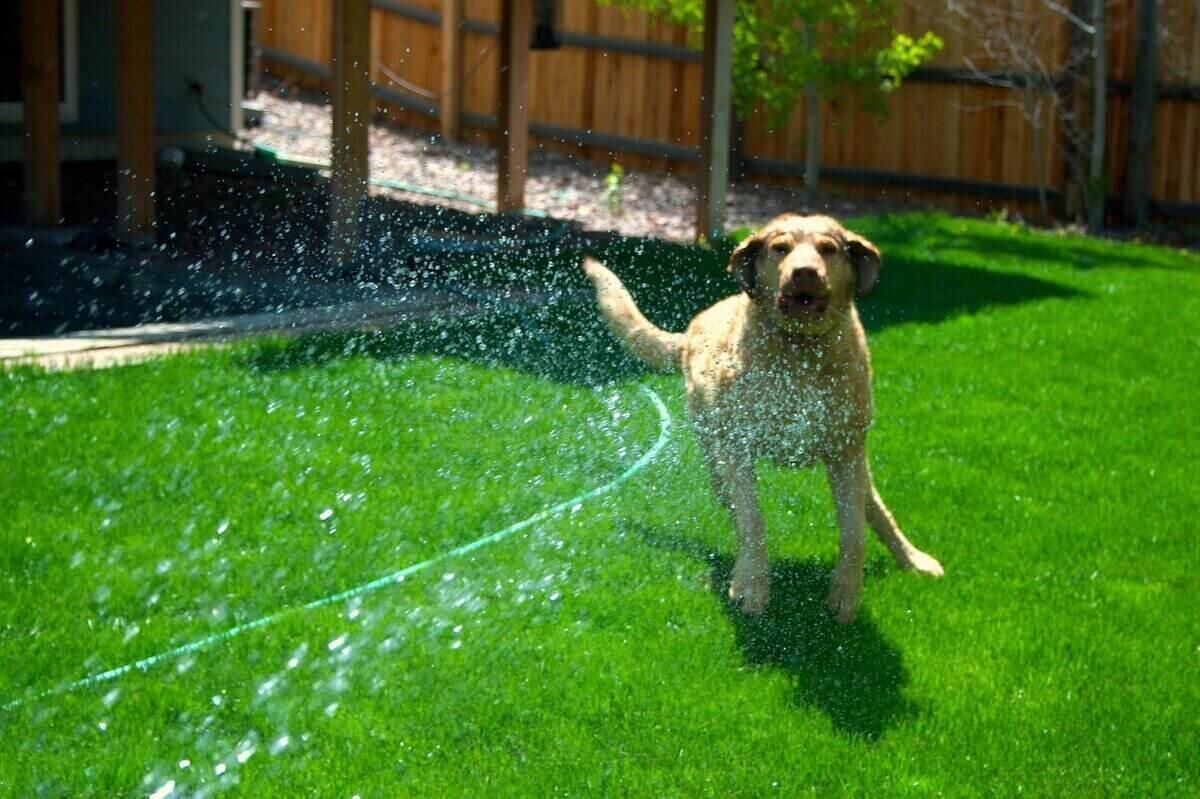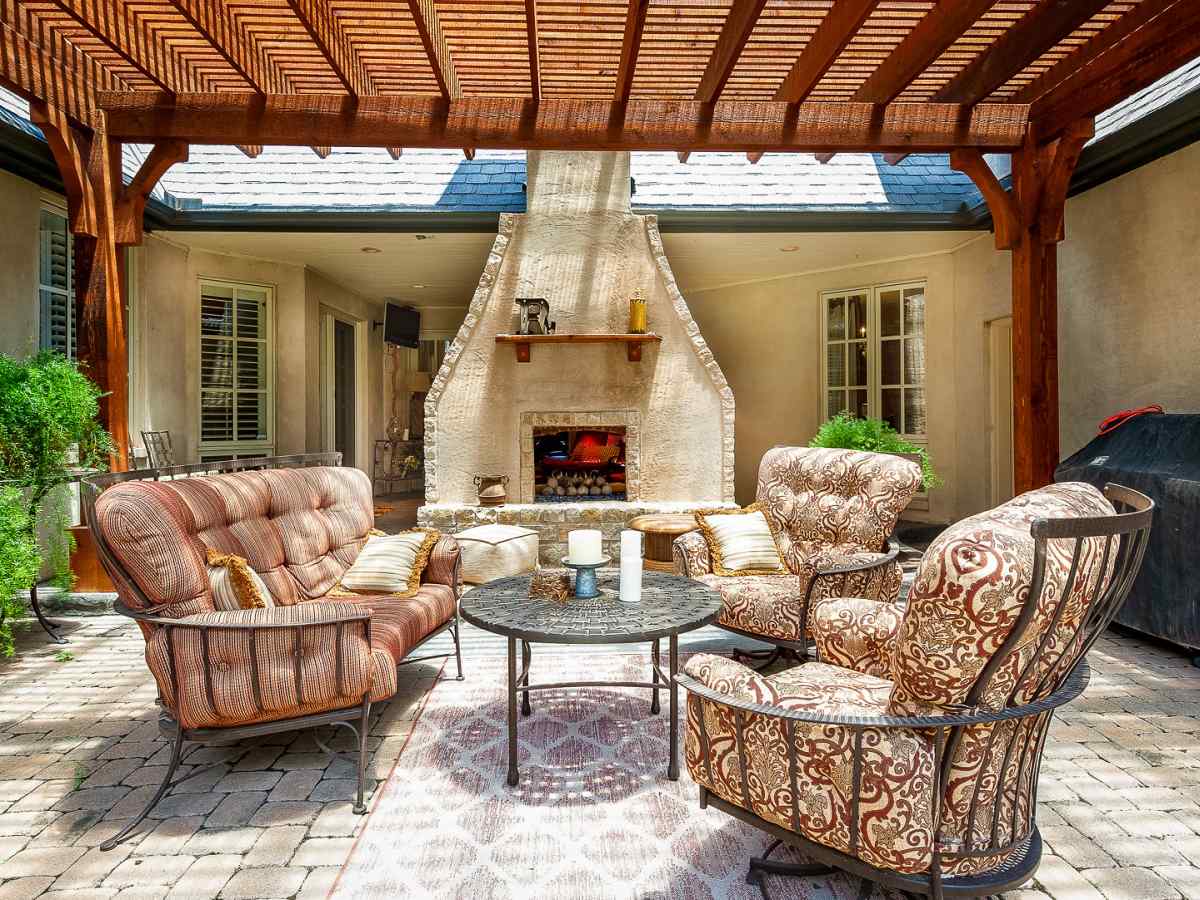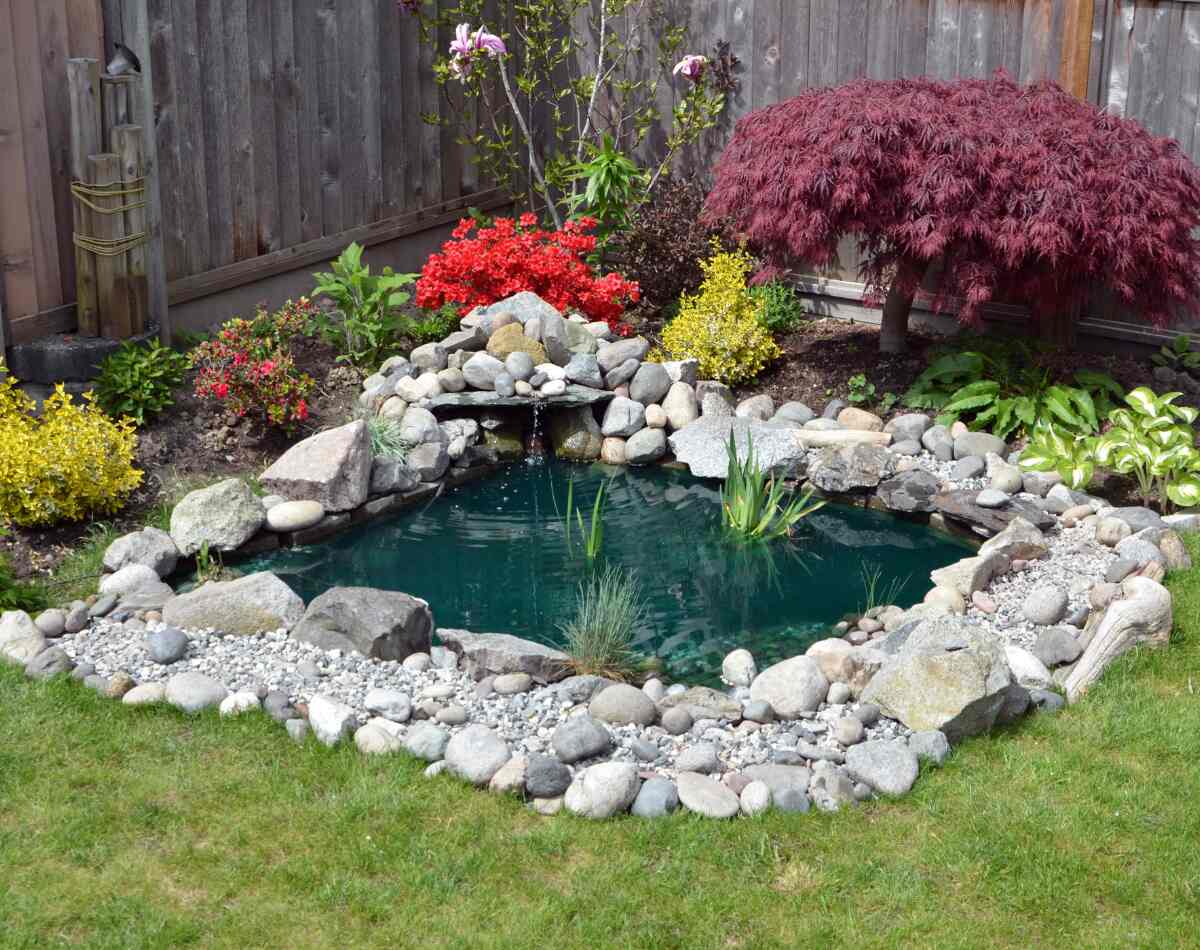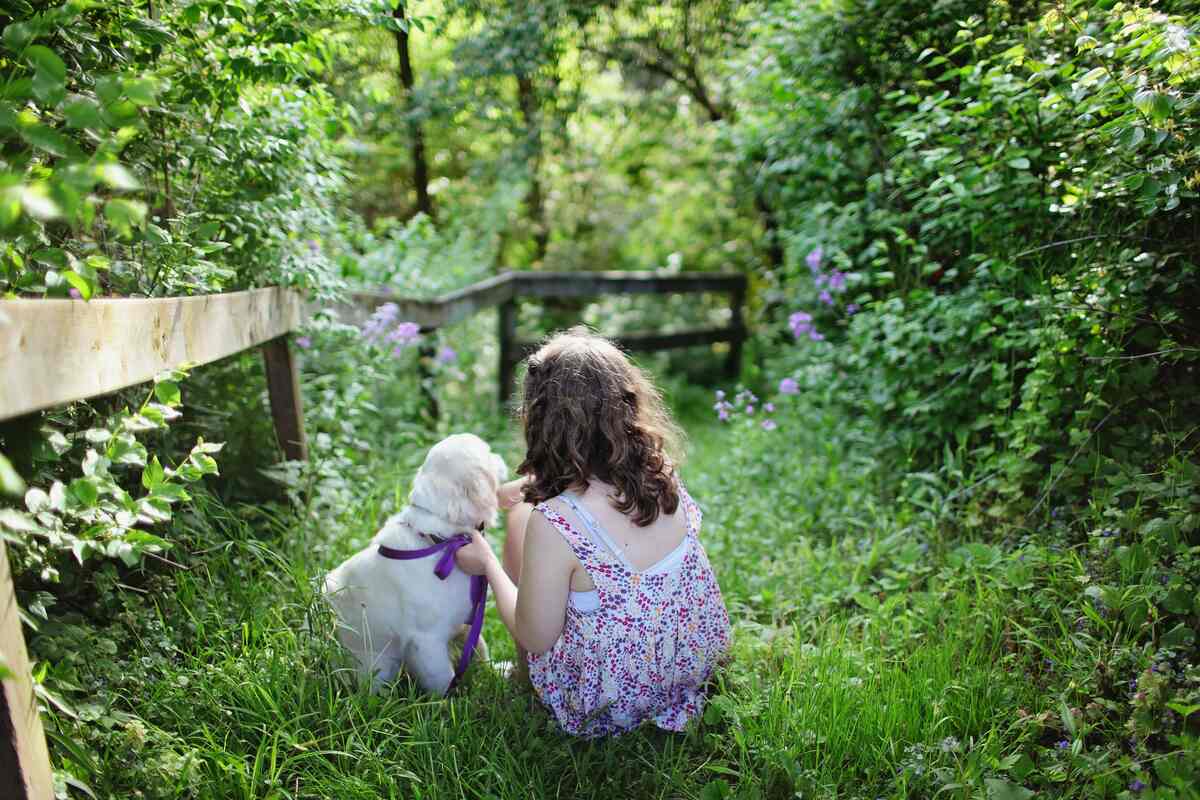
One of the key aspects of creating a successful landscape design for your home involves understanding how your family uses your outdoor space. When your closest family members include dogs, designing a backyard landscape that works for both you and your furry companions is key. Here are the 11 best dog-friendly landscaping tips for your backyard.
Design Ideas with Dogs in Mind
Thinking like a dog is the first step in creating a dog-friendly environment. There are inherent qualities in many breeds that you cannot change. Terriers like to dig, sporting breeds like to sprint, and most dogs want to guard and patrol their territory. Here are the top 11 tips to landscape with your dog in mind:
1. Prioritize Dog Safety
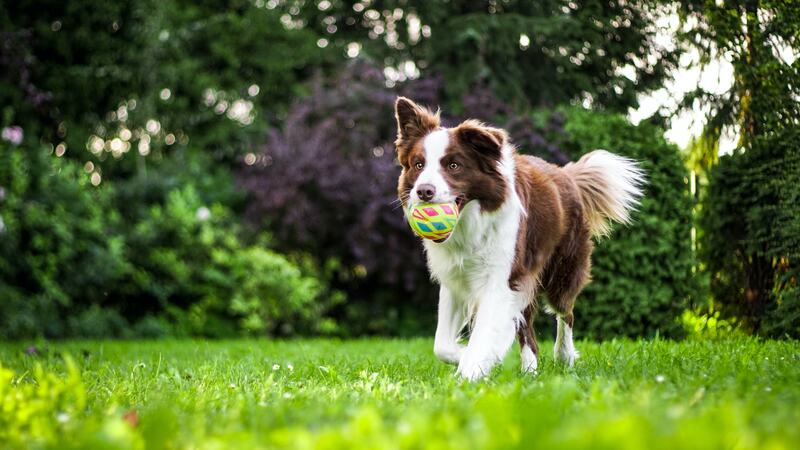
Begin by considering how you would secure the area, given your dogs’ sizes and activity levels. By installing a fence in your yard, you can provide a secure place for your pets to play outside. Chain link, vinyl, and wood are the least expensive fence options.
Invisible fencing costs more and may give the illusion of security, but a dog will run through an invisible fence if the electricity goes out or the collar falls off, and it wants to escape the location. Furthermore, an invisible fence will not keep other animals out of your yard.
2. Add Paw-Friendly Walkways
Smooth, paw-friendly hardscape surfaces, such as light-colored, heat-reflecting pavers or flagstone, may be better path choices than pea gravel that gets strewn in lawns.
3. Mind Your Mulch
Good mulch is vital to a beautiful flower bed, but some aren’t so good for Fido. Dog owners must use mulch with caution in their gardens and yards. Some mulches are generally safe for dogs, while others may be toxic. Some are easy on a dog’s paws, while others will tangle in their fur.
Whatever type of mulch you choose, keeping your dog from eating it is critical. Even if labeled “dog safe,” mulch can cause intestinal blockages and other health issues.
Dog-friendly mulch:
- Pine straw mulch, aka pine needles, is soft to walk on, and most dogs won’t eat it. It’s suitable for your garden beds, eco-friendly, and usable in kennels and dog runs to keep your pup cleaner.
- Pine bark is a reddish-brown organic mulch option made from ripped-up pine tree bark that works well with most flower beds and is dog-friendly. It helps retain moisture for your plants and is the cheapest mulch to buy.
- Cedar mulch, chunked cedar tree bark, is usually chemical-free, making it an excellent organic mulch choice for family yards. Make sure you get a non-dyed, dog-friendly blend.
- Cypress mulch is made from the wood and bark of cypress trees. The scent of cypress is subtle but pleasant, and it provides some natural flea protection, but it can also attract termites.
Mulches to avoid:
- Tire mulch: Pet-friendly landscaping expert Kristin Heggem advises against using mulches made from recycled tires. “They’re a big no-no for dogs,” she says. “They’re toxic to dogs and can contain ground-up woven steel, which can be really damaging.”
- Cocoa mulch: This is another option to avoid. Like chocolate, cocoa hulls can be toxic if dogs ingest them.
- Sharp-edged wood mulch: It gets stuck in hair and paws.
- Dyed mulch: This mulch can cause skin reactions to its chemicals.
4. Create Shady Spots
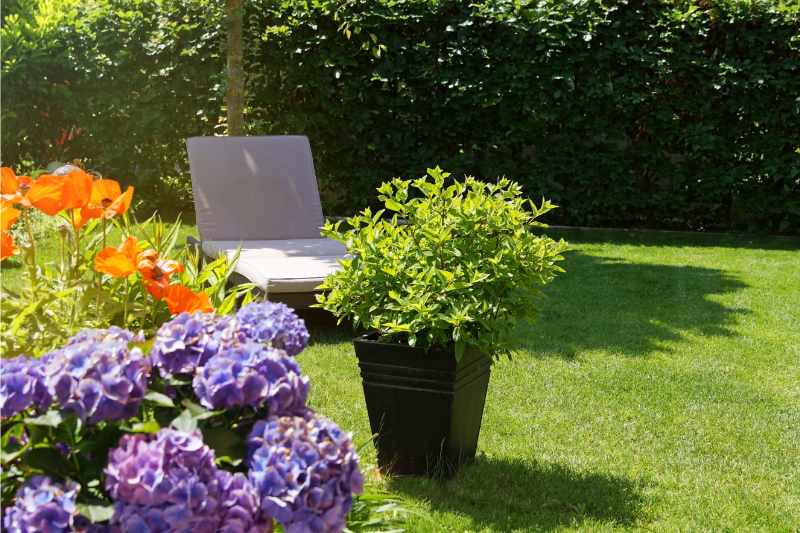
You’ll want to watch for areas where your pet likes to rest. That’s often a spot that lets them keep an eye on you and the back door. Hopefully, your pup has picked a good place or already has a doghouse available, but there are options for providing some extra shade.
- Shade trees are handy for creating a cool spot. If you don’t already have one, try planting some fast-growing shade trees to keep you and your dogs cool.
- Umbrella stands are easily made with a flower planter and a sturdy old patio umbrella. Fill the pot with soil and beautiful flowers for a nice feature around your backyard patio and a cool hang-out spot for your pup.
- Pergolas covered in plants will get you and your pets out of the summer sun. Fun, stylish, and functional pergolas add shelter while creating a focal point and an outdoor living space.
5. Provide Plenty of Water
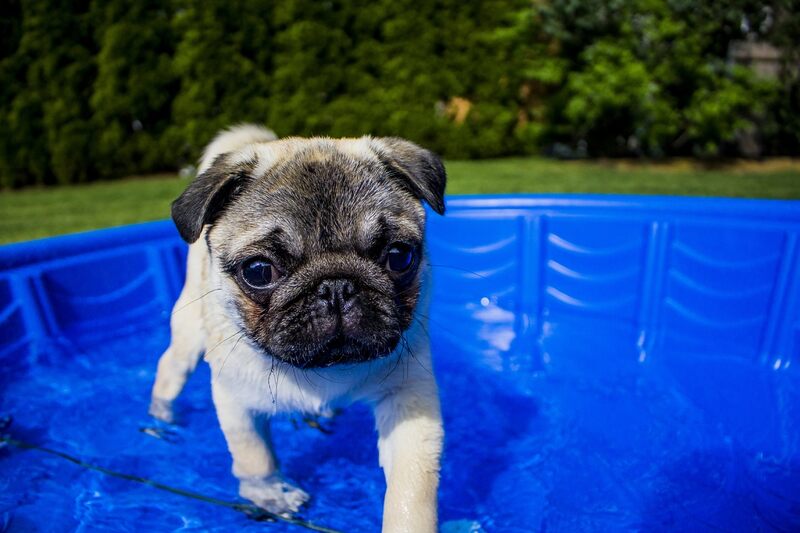
Water accessibility is vital for your dog’s well-being. Your dog can quickly become sick and dehydrated without enough water because many essential body processes depend on it. Here’s how you can make sure your dog drinks sufficient water:
- Water bowls should be readily available and full. Automatic watering bowls checked daily will keep your hound hydrated.
- Puppy pools can help your dog beat the heat and have fun if you want a simple and inexpensive choice. For a DIY pond, you can install it in the ground with a pump to circulate the water.
- Water features can upgrade your yard and provide a water source. A water feature designed to provide fresh, pet-safe water should have steps for your dogs to escape if they fall in.
6. Include a Place to Potty
Make a potty area for your dog and train her to relieve herself there. It doesn’t have to be a large area, and she may have already chosen a location. It should be a spot that protects your grass and bushes from the high nitrogen content of urine.
Set up the area in a convenient place for you and your pet. A corner of your yard is often an excellent choice for building a dog bathroom space. You don’t want it too close to your living spaces, but it should be in an area accessible during bad weather.
- Mark off a space big enough for your pup to sniff around for a good spot to go.
- Lay down a layer of landscaping fabric to help keep the area weed-free.
- Install a border to keep everything in place and cut off the excess fabric.
- Install a marking post for your male dogs. Have fun and be creative! Use a tree stump, a fake fire hydrant, or a funny statue. Simply something to aim for; it doesn’t have to be significant.
- Fill it in with grass, stones, or mulch. Pea gravel is a good option as it’s soft on paws, easy to clean, and inexpensive.
- Train your pup to use the new area by leashing and walking them to the area until they get used to using it.
Select Dog-Friendly Landscape Plants
Typical landscape designs put a lot of emphasis on plant size, shape, and color. Your dog-friendly yard design should do the same. But, in addition to those attributes, you’ll want to zero in on their resilience to dog activities and safety for your furry friend.
Heggem recommends using sturdy plants that stand up to dog play. “Avoid brittle plants that may break easily,” she says. Avoid plants with sharp, holly-like foliage, thorns, or spines, especially at eye or paw level, which can cause pain for your pooch and heartache for you.
“All dogs like to patrol the perimeter, so you’ll want to accommodate that and set plants back away from that path,” Heggem says. “Three feet is about normal.”
1. Opt for Dog-Resistant Turfgrass
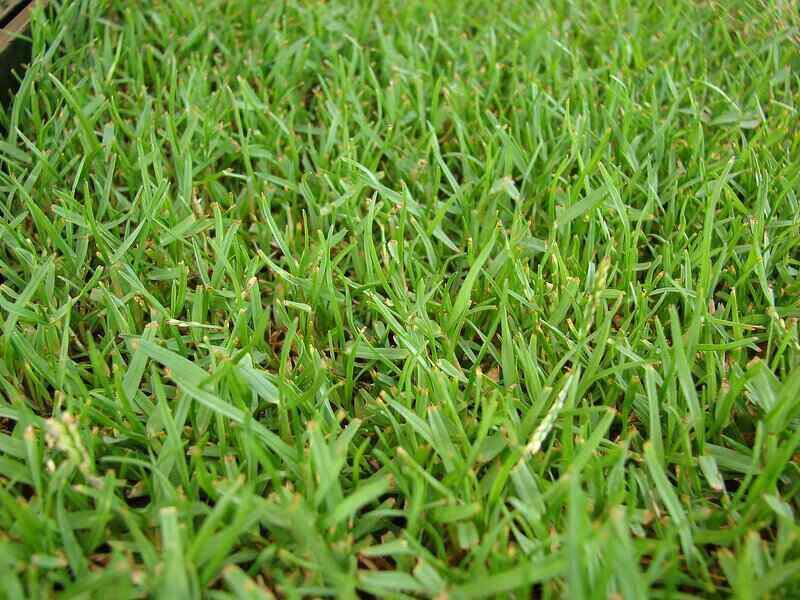
Photo Credit: Forest and Kim Starr / Wikimedia Commons / CC BY 3.0 US
If you and your dog spend a lot of time in your yard, you’ll need a grass variety that can endure heavy foot traffic. Here are the best grasses for dogs:
- Bermudagrass: A warm-season perennial turfgrass, Bermudagrass is resistant to foot traffic and pet urine.
- Kentucky bluegrass: Suitable for northern lawns, Kentucky bluegrass is a perennial cool-season grass. The soft texture is ideal for your feet and Fido’s paws.
- Perennial ryegrass: The robust root system and quick recovery from damage make this a good option. Perennial ryegrass has the added advantage of growing well in the transition zone.
- Tall fescue: Another turfgrass that may withstand heavy use in yards is tall fescue, thanks to its hardiness, clump-forming characteristics, and resistance to lawn burn from dog urine.
- Zoysiagrass: Warm-season grass with a high level of cold resilience. Homeowners frequently use Zoysia for kids’ play and recreation areas.
2. Consider Grass Alternatives For Dogs
Grass requires a lot of maintenance and water. Also, your dog’s urine will kill or discolor your grass. “Typically, we landscape around our homes with grass, but environmentally, it’s a very poor choice,” explains Dr. Amy Attas, DVM of New York-based practice City Pets.
You still can do dog-friendly landscaping without grass. Here are some no-grass backyard ideas for dogs to get you started:
- Gravel: Some of its benefits are that it is simple to clean, low maintenance, and drains liquid rapidly. The drawback is that the gravel might become stuck in paw pads and between toes or get too hot for your dog’s paws without shade.
- Ornamental grass: If you prefer the look and feel of grass, ornamental grasses are tough, aesthetically beautiful, and safe for your dog to nibble on. Ornamental grasses such as little bluestem and Indiangrass grow naturally, do not require much water or care, and are environmentally friendly.
- Ground cover plants: Dog-resistant ground cover plants are one of the best grass alternatives for dogs. Ground covers are plants that spread sideways and grow close to the ground, like a turfgrass lawn. There are even flowering ground covers that are also dog-friendly.
Here are a few of the best ground covers for dogs (all of these are flowering, dog-safe ground cover options):
- Irish moss (Chondrus crispus)
- Labrador violet (Viola labradorica)
- Silver carpet (Stachys byzantina)
- Snow-in-summer (Cerastium tomentosum)
3. Ponder Artificial Turf Carefully
Before you install synthetic grass in your yard as an alternative to grass for dogs, weigh the cost of artificial grass with its pros and cons. Artificial turf, for example, may save gallons of water, but it is questionable whether it is a viable option for a dog-friendly backyard with no grass. That’s because artificial turf:
- Must be sanitized: Artificial grasses, even those designed for dogs, retain some urine and remnant dog poo until it’s cleaned away. So keep in mind that your neighbor’s dog’s poo (or your own dog’s poo) won’t go away that easily.
That means not only putting your pooper scooper to use but disinfecting, deodorizing, and washing artificial grass to prevent bacteria and nasty odors.
- Can get hot: Although a good lawn alternative for dogs, synthetic grass has added risks for pets and humans. While natural grass has a cooling effect, artificial grass heats up. Penn State reports that synthetic turf has been measured as hot as 200 degrees on a 98-degree day. That can mean burned paws, heat exhaustion, or even worse.
4. Grow Safe Plants for Dogs
“Dogs naturally chew on things, including plants,” Heggem says. “Using non-toxic plants is very important.” Don’t worry, though. There are plenty of dog-friendly plants that can bring color to your yard.
- Camellias (Camellia japonica)
- Coreopsis (Coreopsis)
- Nasturtiums (Tropaeolum majus)
5. Avoid Plants Toxic to Dogs
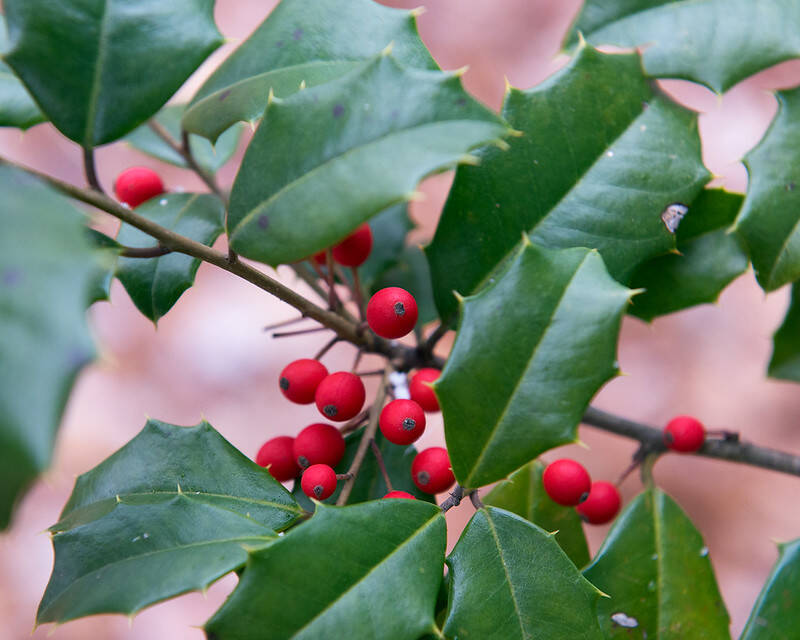
Photo Credit: Plant Image Library / Flickr / CC BY-SA 2.0
Steer clear of plants that are toxic to dogs if eaten. This includes common plants such as:
- American holly (Ilex opaca): American holly also goes by the common names of English holly, European holly, Oregon holly, inkberry, and winterberry.
- Azaleas (Rhododendron)
- Yew (Taxus baccata): Common names in this genus include Western yew, Pacific yew, Japanese yew, and Anglo-Japanese yew.
Getting the Big Dogscaping Picture
Colorado-based landscape architect Kristin Heggem, an expert in pet-friendly landscape design, explains that approaches may vary significantly based on the size of your dog. “Large dogs need space to run, while smaller dogs use space differently,” she says. Retrievers and terriers, for example, differ in their backyard needs.
Before you launch into the nitty-gritty details and the benefits of dog-friendly landscaping, consider your space as a whole. Heggem suggests watching your dog’s route when you let them out.
- Do they run straight for the fence line to check for intruders?
- Do they shoot for the back corner where their favored potty area lies?
- Do they like to splash in the water or dig holes in the yard?
By watching their movements, you can discover the spaces they’ve already chosen for dog paths and other purposes, and work your landscape according to your dog’s behavior.
Landscape For Behavior
Adding landscape features to keep Fido feeling fit can help him get rid of boredom and excess energy breed. Regular walks, a game of fetch, or a trip to your favorite dog park are great, but why not tailor your landscape to suit your dog’s preferences?
- For the digger: Rather than attempting to discourage your dog from digging, provide him with a separate area where he can follow his instincts without ruining your yard, soil, or flowers. Try building a DIY doggie sandbox.
- For the runner: Some dog breeds love to run, run, and run. Creating a DIY dog agility course isn’t as hard as it sounds. Create balance beams with 2x4s, and PVC pipe can make bar jumps.
- For the lookout: If your backyard fence is made of solid wood or vinyl, you can install a dog window to make it much more interesting for your dog. Your pup can patrol the yard and keep an eye on passers-by.
In conclusion, creating a safe play area for your dog is one of the essential elements of designing a dog-friendly backyard that works for you and your canine companions.
FAQ: Backyard Ideas for a Dog-Friendly Landscape
Are Houseplants Toxic to Dogs?
Yes, there are many types of plants considered toxic to dogs, including houseplants. Some common plants that you should keep away from your dog are:
- Aloe (Aloe vera)
- Caladium (Caladium bicolor): Other common names for caladiums include elephant’s ears, malanga, stoplight, pink cloud, Texas wonder, angel-wings, exposition, and fancy-leaved caladium.
- African lily (Zantedeschia aethiopica): Other common names for the African lily include white arum, trumpet lily, florist’s calla, garden calla, and arum lily.
What Damage Do Dogs Cause to Lawns?
There are a few ways your canine friend can destroy your lawn.
- Excrement: Your dog’s waste contains high nitrogen levels and bacteria that can brown or yellow your grass.
- Playing: Dogs crush the grass and compress the soil when they run, walk, and play on the lawn. This becomes a severe issue if the dog regularly walks across the same stretch of the yard.
- Digging: Dogs destroy plants by digging them up. The digging can reduce soil moisture and make it more difficult for new grass to grow.
How Do You Neutralize Dog Urine on Grass?
Diluting the urine with water will allow it to seep into the soil and not sit on your grass, killing it. You can use a hose or run a sprinkler to help dilute it.
Repair damaged areas by overseeding them and providing a specific place for your pet to potty. This will make clean-up more manageable and less expensive to repair.
When to Hire a Pro
You can ensure that you and your dog have hours of safe outdoor fun by focusing on dog-friendly landscaping with your four-legged friend’s well-being in mind. If this seems like a lot of work, consider hiring a professional landscaper to design the perfect yard for your family and your dog.
For regular lawn care, contact one of our local landscaping pros to maintain a trim lawn in which your dog can romp and play year-round.
Main Image Credit: Pexels
